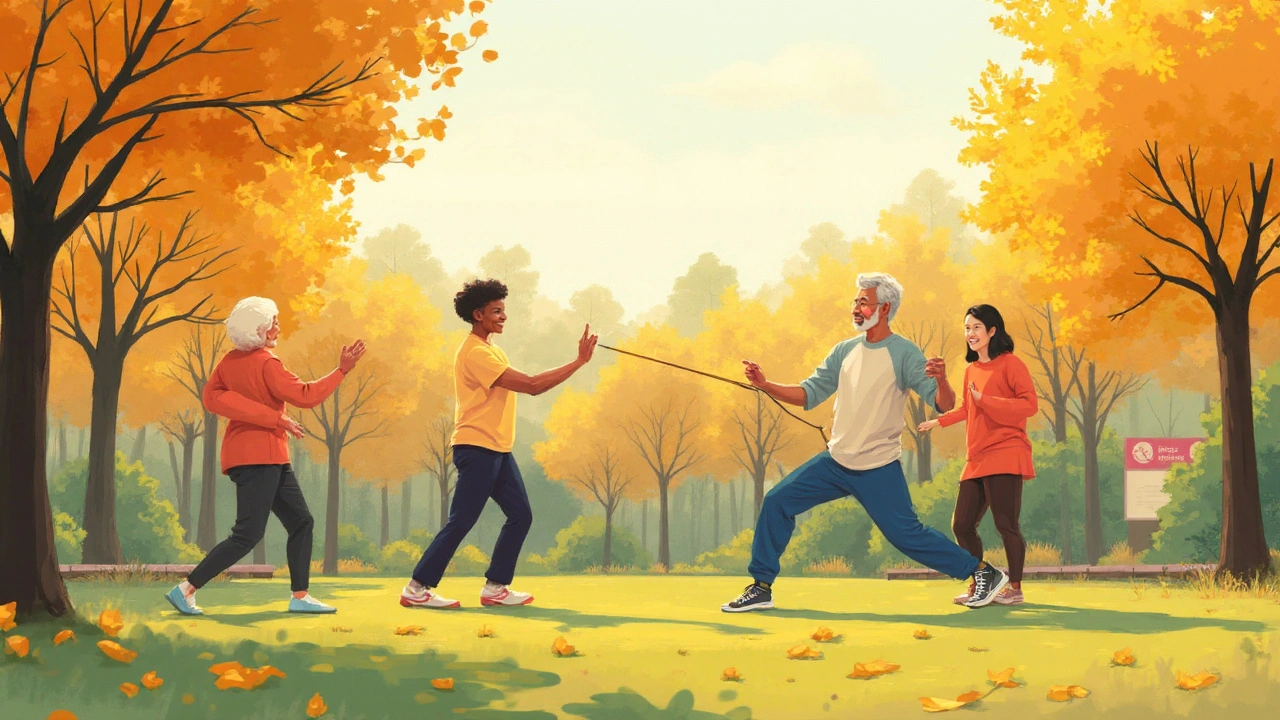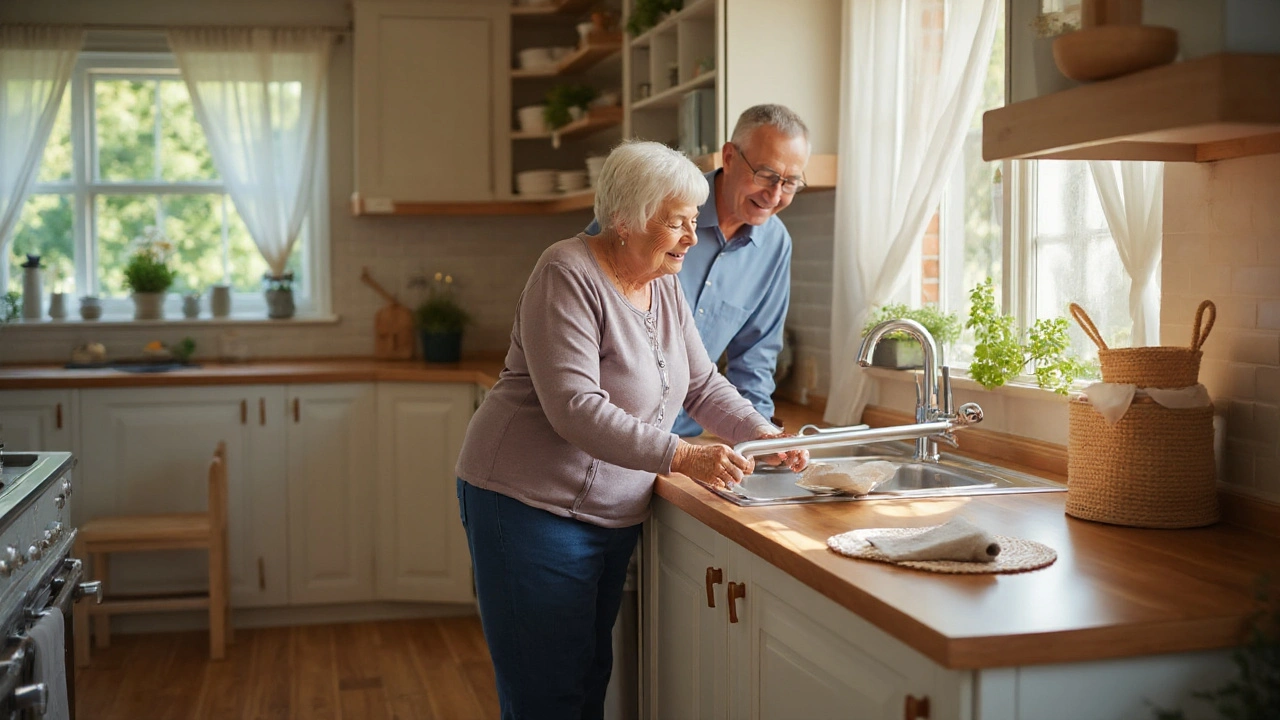Understanding osteoporosis fall prevention can save you from painful fractures and long‑term disability. In people with weakened bones, a simple stumble can turn into a life‑changing injury. This article walks you through why preventing falls matters, the science behind bone loss, and practical steps you can take today.
Fall Prevention in Osteoporosis Management is a multidisciplinary approach that combines medical treatment, lifestyle changes, and environmental modifications to lower the chance of a fall‑related fracture in individuals diagnosed with osteoporosis.What Is Osteoporosis?
Osteoporosis is a chronic condition characterized by reduced Bone Mineral Density (the amount of mineral matter per cubic centimetre of bone), making the skeletal framework fragile and more likely to break under low‑impact forces. According to a 2023 report from the World Health Organization, roughly 22% of women and 6% of men over 50 suffer from osteoporosis worldwide. The disease often progresses silently until a fracture occurs, most commonly at the hip, spine, or wrist.
The Real Cost of Falls
Every year, falls are the leading cause of injury‑related hospital admissions among older adults with osteoporosis. A UK NHS analysis from 2022 showed that hip fractures alone cost the health service more than £1.7billion annually, with a 20% mortality rate within the first year. Beyond the financial toll, patients face loss of independence, chronic pain, and a steep decline in quality of life.
Core Pillars of Fall Prevention
Effective fall prevention rests on five interlocking pillars: bone health optimization, targeted exercise, home safety, protective devices, and appropriate medication. Each pillar addresses a specific risk factor and together they create a robust safety net.
1. Optimizing Bone Health
Strengthening the skeleton starts with ensuring adequate intake of calcium (1,000mg‑1,200mg daily) and vitaminD (800‑1,000IU daily). Blood tests that measure serum 25‑hydroxyvitaminD help clinicians tailor supplementation. Additionally, regular weight‑bearing activities-like brisk walking or light resistance training-stimulate bone remodeling, modestly increasing BMD over time.
2. Exercise and Balance Training
Balance Training is a series of neuromuscular exercises designed to improve proprioception, coordination, and postural control that directly lowers fall risk. Programs such as TaiChi, yoga, and dedicated senior fitness classes have shown 30‑40% reductions in falls in randomized trials. A 2021 meta‑analysis of 23 studies reported that participants who practiced balance training at least twice weekly had a 31% lower incidence of fractures compared with standard care.3. Home Safety Assessment
Home Safety Assessment is a systematic walk‑through of a living space to identify hazards like loose rugs, poor lighting, and lacking grab bars . Occupational therapists or trained volunteers can conduct these checks, recommending simple upgrades that cost less than £200 on average but can cut fall risk by up to 25%.
4. Protective Devices
When falls do happen, protective gear can lessen injury severity. Hip Protectors are padded garments worn over the hips that absorb impact energy, reducing fracture rates by roughly 45% in high‑risk groups, according to a 2020 Cochrane review. While not a substitute for other measures, they are especially useful for individuals with a history of hip fractures.
5. Medication Management
Bisphosphonate Medication is a class of drugs (e.g., alendronate, risedronate) that inhibit bone resorption, thereby increasing bone density and reducing fracture risk . Clinical trials consistently show a 40‑50% reduction in vertebral fractures and a 20‑30% reduction in hip fractures when taken as prescribed. Adherence remains a challenge; weekly dosing schedules and patient education improve compliance.Putting It All Together: A Personalized Fall‑Prevention Plan
Creating a plan starts with a risk assessment. Tools like FRAX (Fracture Risk Assessment Tool) calculate 10‑year probability of major osteoporotic fractures based on age, BMD, prior fractures, and lifestyle factors. Once the baseline risk is known, clinicians can prioritize interventions.
- Schedule a DEXA scan to obtain accurate BMD values.
- Review current medications for side effects that increase fall risk (e.g., sedatives).
- Implement a vitaminD and calcium regimen tailored to blood test results.
- Enroll in a supervised balance training program-twice weekly for at least six months.
- Conduct a home safety assessment and install grab bars, night lights, and anti‑slip mats.
- Consider hip protectors if a prior hip fracture exists.
- Prescribe bisphosphonate therapy if BMD T‑score ≤‑2.5 or if FRAX indicates high risk.
Regular follow‑up every six months allows the care team to adjust the plan, track BMD changes, and reinforce exercise adherence.
Monitoring Progress and Adapting Strategies
Key performance indicators include improvements in balance test scores (e.g., Timed Up‑and‑Go), adherence rates to medication and exercise, and any incident falls. If a patient experiences a fall despite precautions, re‑evaluate each pillar: perhaps the home environment needs further modifications or the exercise intensity should be increased.
Related Concepts and Next Steps
Understanding Fracture Risk is essential for contextualizing fall prevention measures. While this article focuses on primary prevention, secondary prevention-rehabilitation after a fracture-is another vital area. Readers may also explore nutrition strategies for bone health, the role of hormonal therapy, and emerging treatments such as monoclonal antibodies (e.g., denosumab).
| Intervention | Average Risk Reduction | Typical Cost (UK) | Ease of Adoption |
|---|---|---|---|
| Balance Training | 31% | £150‑£300 per 12‑week course | Medium - requires regular class attendance |
| Home Safety Assessment | 25% | £100‑£200 for professional visit | High - simple modifications after advice |
| Hip Protectors | 45% | £80‑£120 per pair | High - wear during daily activities |
| Bisphosphonate Medication | 40‑50% (vertebral), 20‑30% (hip) | £30‑£60 per month | Medium - adherence required |
Frequently Asked Questions
How often should I do balance exercises?
Aim for at least two supervised sessions per week, supplemented by daily short routines at home. Consistency is more important than intensity.
Can vitaminD alone prevent falls?
VitaminD improves muscle function and reduces falls, but it works best when combined with exercise and environmental safety measures.
What is the best time of day for a DEXA scan?
There is no strict timing, but many clinics schedule scans in the morning to avoid scheduling conflicts and ensure consistent hydration.
Are hip protectors uncomfortable?
Modern designs are thin, breathable, and fit under clothing. Most users report minor adjustment periods before they become routine.
How can I tell if my medication is working?
A repeat DEXA scan after 1‑2years should show stable or improved BMD. Fewer falls and no new fractures also indicate effectiveness.
Is it safe to start a new exercise program after a fracture?
Always get clearance from your doctor or physiotherapist. Low‑impact activities like water aerobics are often recommended during the early recovery phase.
What lifestyle changes complement fall‑prevention efforts?
Quit smoking, limit alcohol intake, maintain a healthy weight, and stay socially active. Each of these factors supports bone health and balance.


Anil Karwal
Just another reminder to keep the lights on and rugs tucked away.